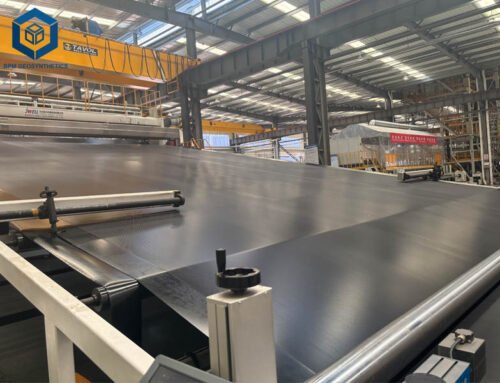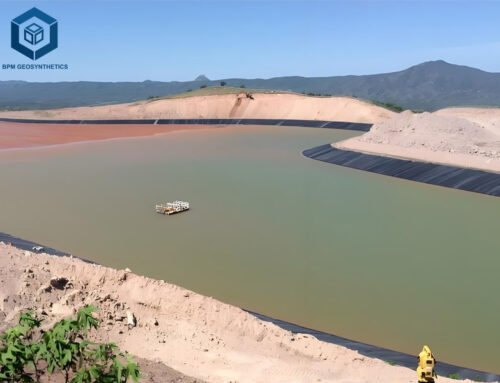The Bottom Liner Landfill thickness options for waste containment is a critical aspect of landfill construction to ensure effective anti-seepage measures. The ideal thickness of a geomembrane for a Bottom Liner Landfill depends on various factors, including site-specific conditions, waste characteristics, regulatory requirements, and engineering considerations.BPM Geosynthetics is the leading HDPE liner manufacturer and supplier, we are experienced geotechnical and environmental engineering professionals who can make an informed decision on the optimal Bottom Liner Landfill thickness for the landfill site. In this articl, let’s explore multiple factors, including waste composition, site conditions, regulatory requirements, and cost-effectiveness to choosing best Bottom Liner Landfill thickness for your specific applications.
1. What Is A Bottom Liner Landfill Thickness?
Bottom Liner Landfill thickness varies by regulations, site conditions, and materials. It has multiple layers, each with a specific thickness. The main layer is often an impermeable geomembrane like HDPE. Its thickness can be 0.5mm to 3mm or more based on landfill design and needs. Thicker liners are used in tough conditions or when more protection is needed. Other layers like GCL or compacted clay may also be added, usually a few centimeters to several tens of centimeters thick.
2. What Is The Function of Bottom Liner Landfill?
Landfill geomembrane is integral to the design, construction, and operation of landfills. Bottom Liner Landfill is essential for addressing environmental concerns, meeting regulatory requirements, and ensuring the responsible management of waste disposal sites. The proper selection, installation, and maintenance of geomembranes are critical aspects of landfill engineering practices. As an anti-seepage layer, geomembrane Bottom Liner Landfill can effectively prevent the leakage of sewage and reduce the risk of groundwater pollution.
2.1 Bottom Liner Landfill – Prevent the spread of contaminants
Choosing the appropriate thickness for a geomembrane HDPE liner is crucial in preventing the dissemination of contaminants. It ensures the safeguarding of water resources and the preservation of the ecological environment, effectively protecting their integrity and safety.
2.2 Bottom Liner Landfill – Improve the stability of the landfill
Using a HDPE geomembrane as a leak-proof layer boosts landfill stability and safety. It reduces problems like ground collapse and settlement from waste leaks. This helps improve landfill stability and safety.
2.3 Bottom Liner Landfill – Extend the life of the landfill
Installing a properly thick HDPE geomembrane liner extends landfill life by stopping garbage leaks and pollutant spread. This layer secures waste, reducing environmental impact and supporting the landfill’s long-term use and sustainability.
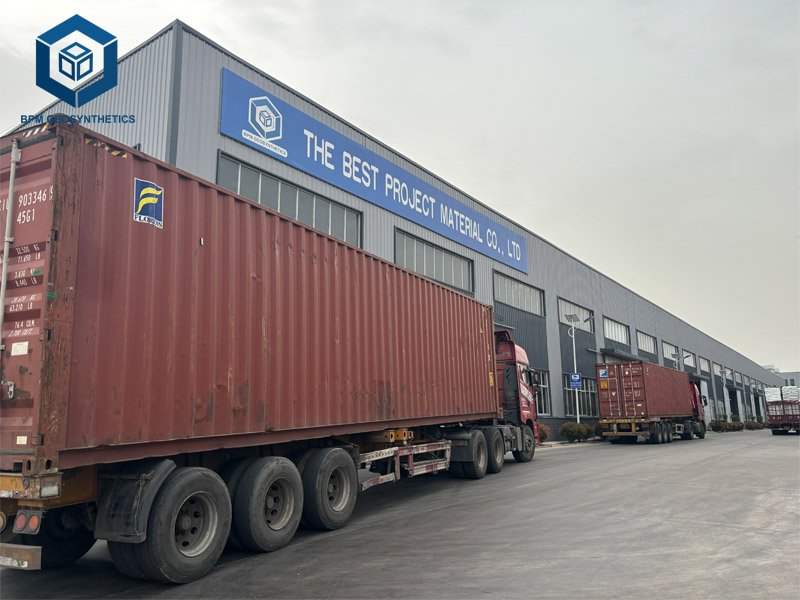
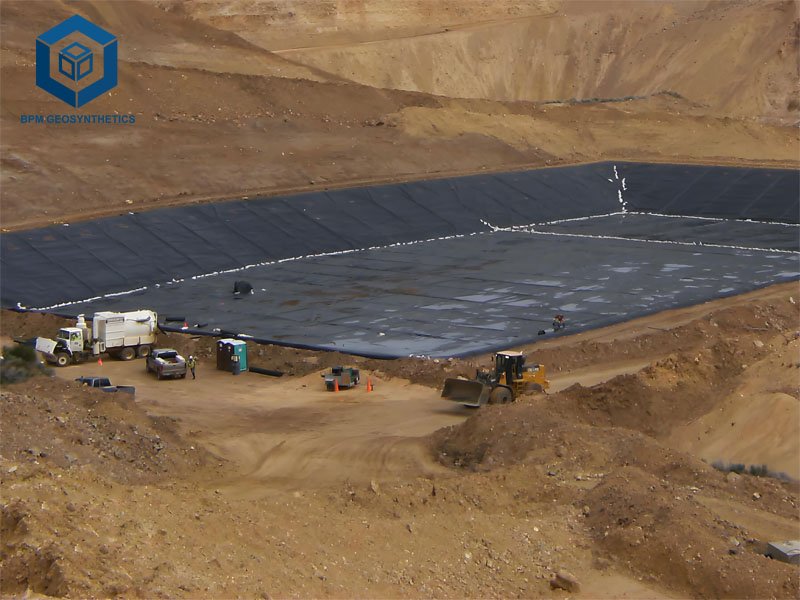
3. Selecting Right Bottom Liner Landfill Thickness for Waste Containment
Several factors come into play when determining the appropriate geomembrane thickness for a landfill. The type of waste being disposed of, site-specific conditions such as soil characteristics and groundwater levels, regulatory guidelines, and the overall design of the liner system all play a role. Thicker geomembranes offer enhanced resistance to punctures and durability, providing a higher level of protection against potential leaks. However, thinner liners may be suitable for landfills with less demanding waste compositions and lower waste loadings. Balancing cost-effectiveness with the desired level of containment is essential. Site-specific evaluations, waste characterization studies, and engineering analyses are necessary to determine the optimal Bottom Liner Landfill thickness and ensure its long-term performance in preventing the spread of contaminants and maintaining environmental safety.
3.1 Bottom Liner Landfill – Type of Waste Containment
The characteristics of the waste being disposed of in the landfill are crucial in determining the geomembrane thickness. Different types of waste, may have varying levels of reactivity, corrosiveness, and potential for leachate generation
3.2 Design Standard of Bottom Liner Landfill Thickness for Waste Containment
Landfill design standards and regulations vary among different countries and regions, leading to varying requirements for geomembrane HDPE liner thickness. Standards such as GRI GM13 and GB Standard provide guidelines for landfill design and may include specific provisions for geomembranes. These regulations often stipulate minimum thickness requirements for geomembranes based on factors such as the type of waste being disposed of and the potential environmental impacts. These requirements aim to ensure adequate containment and prevent the leakage of contaminants into the surrounding environment. It is crucial for landfill operators and designers to adhere to these design standards and regulations to promote environmental protection and ensure the long-term integrity of Bottom Liner Landfill systems. Consulting the applicable standards and regulations specific to the location is essential to determine the appropriate geomembrane thickness for waste containment in landfill design.
3.3 Bottom Liner Landfill – Size of Landfill
Different landfill sizes will also require different geomembrane Bottom Liner Landfill thickness. if the slope is relatively large and steep, a textured geomembrane HDPE liner thickness needs to be used on the steep slope to increase the friction coefficient.
3.4 Other of Geosynthetics
Some landfills use a combination of multiple geosynthetics to increase the anti-seepage effect.it is a common way to use geosynthetic clay liners and HDPE geomembranes together. To provide more reliable anti-seepage protection
4. What Is Common Bottom Liner Landfill Thicknesses for Waste Containment
The optimal Bottom Liner Landfill thickness selection for HDPE geomembrane should be evaluated in detail by a professional geotechnical engineer or environmental expert. These professionals will ensure that the selection of geomembrane meets the needs of engineering and environmental protection based on various factors such as the characteristics of the specific project, geological conditions, regulatory requirements, etc. The following are several common HDPE geomembrane thickness ranges
- 0mm–1.5mm: Thinner HDPE geomembranes are commonly used in some general landfills, especially where non-hazardous and organic waste volumes are small. This thickness provides basic protection against seepage.
- 5mm–2.0mm: This is the more common thickness range for HDPE geomembranes and is suitable for most general landfills. This range of geomembranes provides better anti-seepage performance while achieving a certain balance between engineering design and economic cost.
- 0mm–2.5mm: Thicker HDPE geomembranes are often used in situations that have a higher organic waste content or are highly decayable. This thickness can provide a higher level of anti-seepage performance and is suitable for some projects with higher environmental impact requirements.
Textured Geomembrane HDPE liner thickness of 1.5mm–2.0mm is suitable for steep slopes
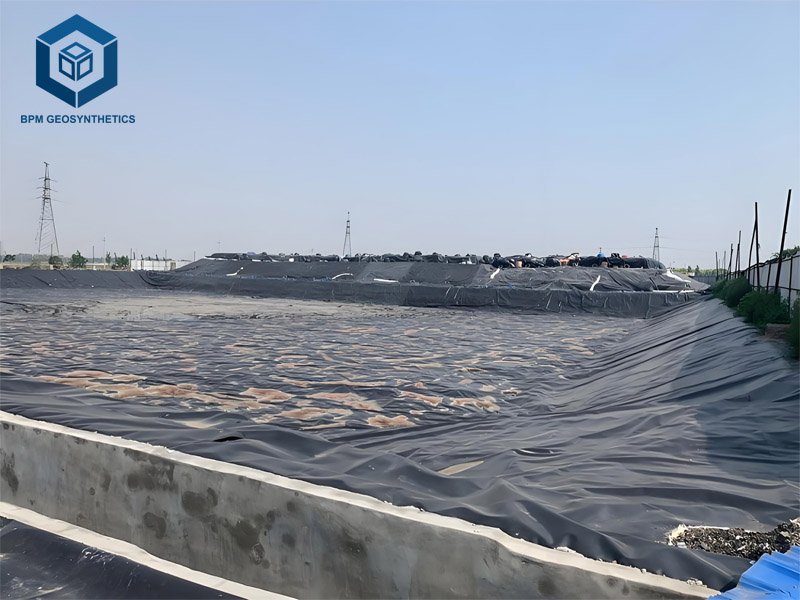
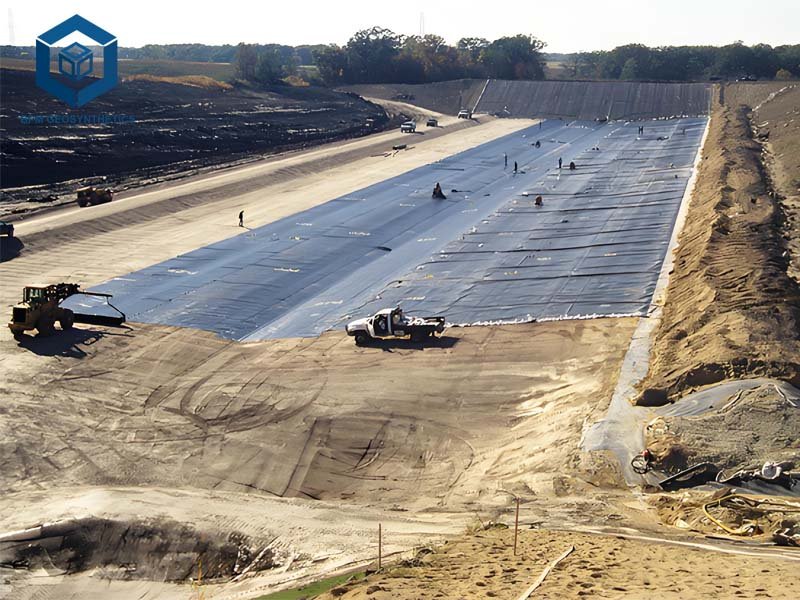
5. How To Correctly Install Bottom Liner Landfill In A Project?
Installing a bottom liner system in a landfill project is critical to preventing leachate contamination of soil and groundwater. BPM Geosynthetics is a leading manufacturer of high-quality geomembranes and geosynthetic materials, which are often used in landfill liners. Below is a step-by-step guide for correct installation:
5.1 Site Preparation
- Subgrade Leveling: Ensure the subgrade is smooth, compacted, and free of sharp rocks, debris, or voids.
- Slope Stability: The base should have a stable slope (typically 2–3%) to facilitate leachate drainage.
- Quality Control: Conduct tests for compaction, moisture content, and permeability.
5.2 Geotextile Layer
- A nonwoven geotextile may be installed to protect the geomembrane from punctures and provide cushioning.
5.3 Geomembrane Liner Installation
- Material Selection: Use HDPE geomembrane (1.5–2.0mm thickness) from BPM Geosynthetics for durability and chemical resistance.
- Unrolling & Positioning: Deploy rolls carefully, avoiding wrinkles or folds.
- Welding/Seaming:
- Dual Hot Wedge Welding (for HDPE) ensures strong, leak-proof seams.
- Extrusion Welding for patches and complex areas.
- Seam Testing: Conduct air pressure testing or vacuum testing to ensure integrity.
- Anchoring: Secure edges in anchor trenches to prevent slippage.
5.4 Geocomposite Drainage Layer
- Install a geocomposite drainage net or gravel layer to collect and channel leachate to sumps.
5.5 Protective Cover Layer
- A secondary geotextile or soil layer may be added to protect the geomembrane from damage during waste placement.
6. Conclusion
Selecting the optimal geomembrane thickness requires careful consideration of impermeability requirements, waste type, climatic conditions, construction challenges, cost factors, and material properties. BPM Geosynthetics provides high-quality HDPE and LLDPE geomembranes in varying thicknesses (1.0–3.0mm) to meet these demands, ensuring superior seepage prevention and long-term landfill stability. By choosing the right geomembrane, engineers enhance the safety, durability, and environmental performance of landfill containment systems. BPM Geosynthetics supports responsible waste management by delivering reliable, certified, and cost-effective solutions that uphold the integrity of modern landfill projects.

